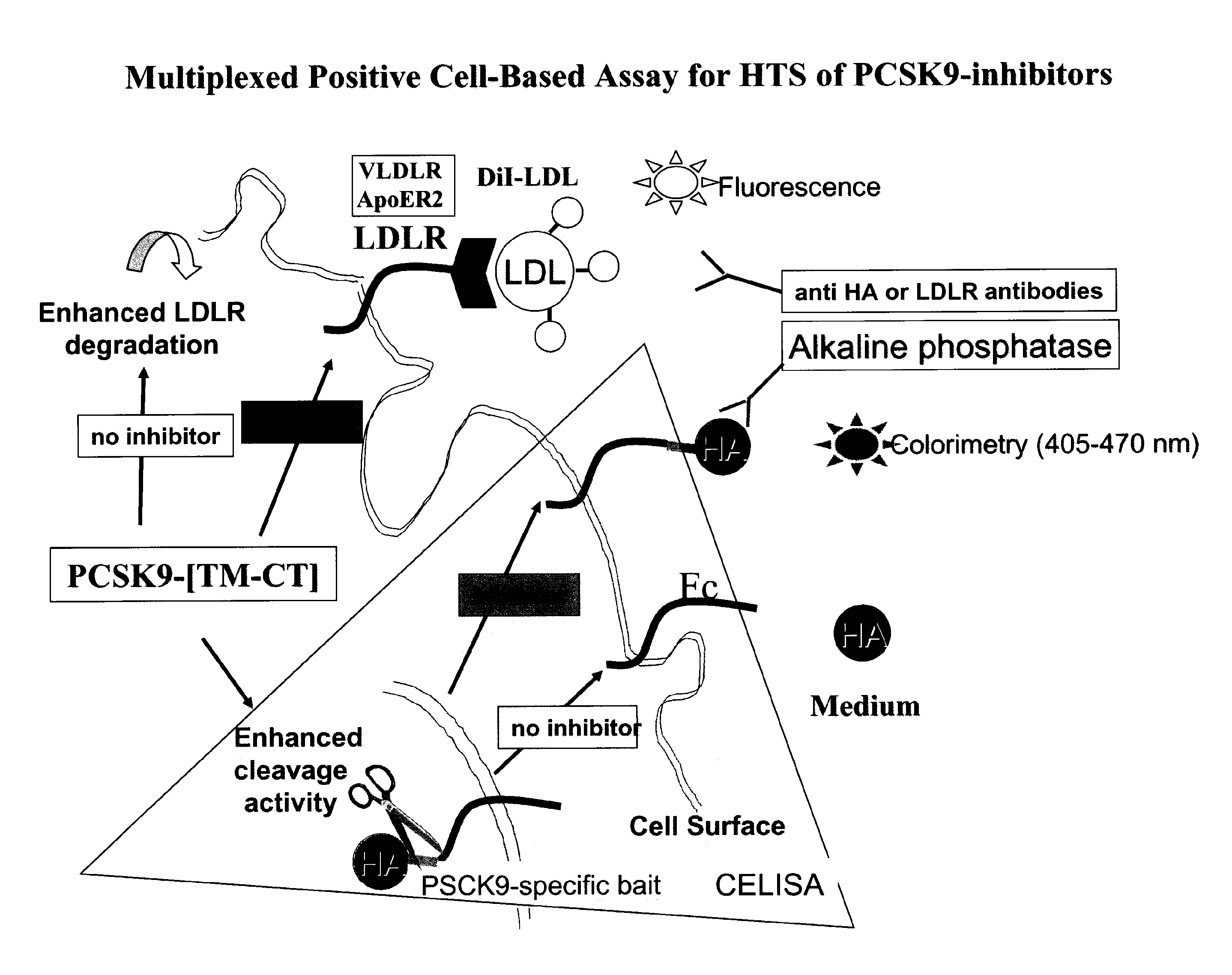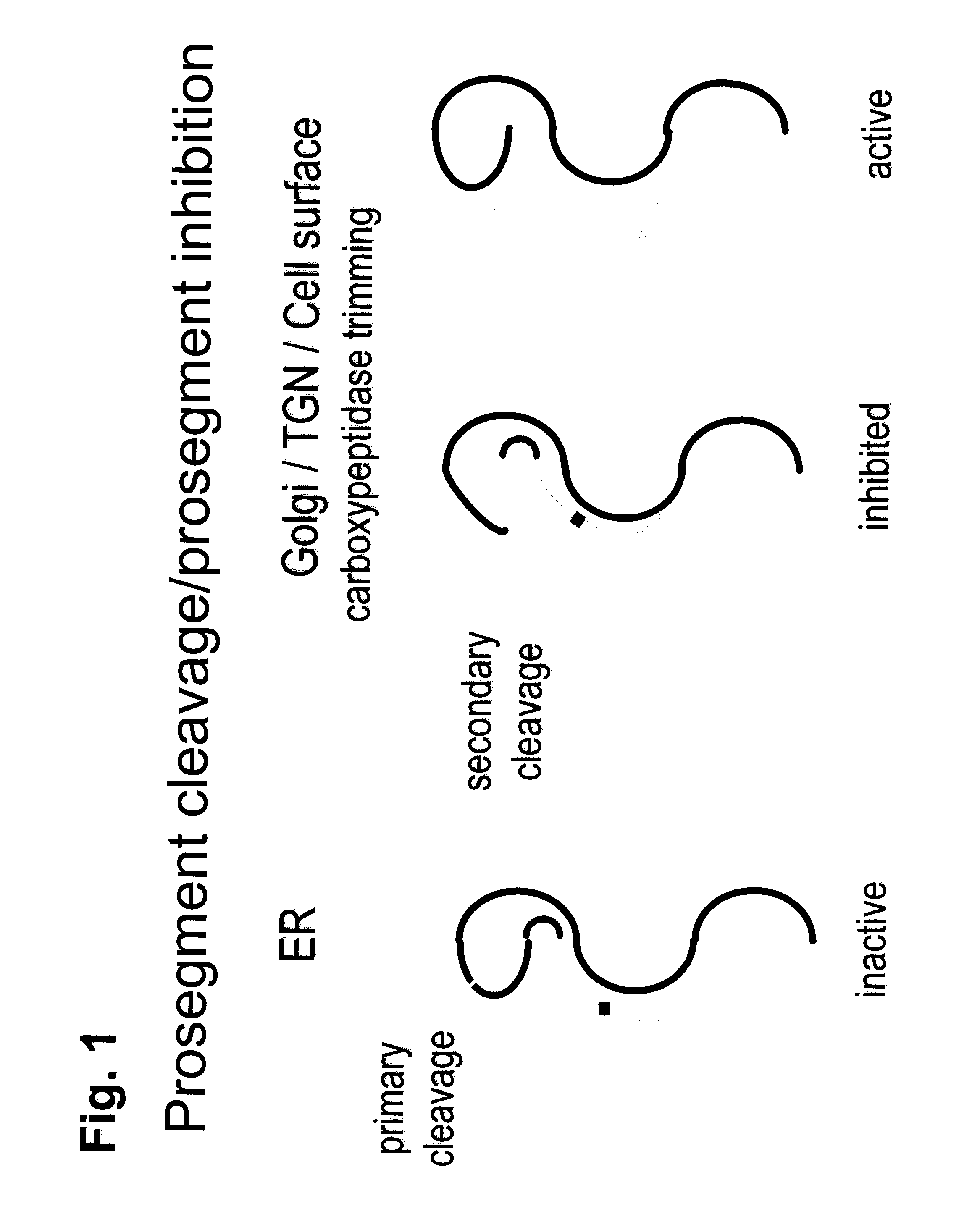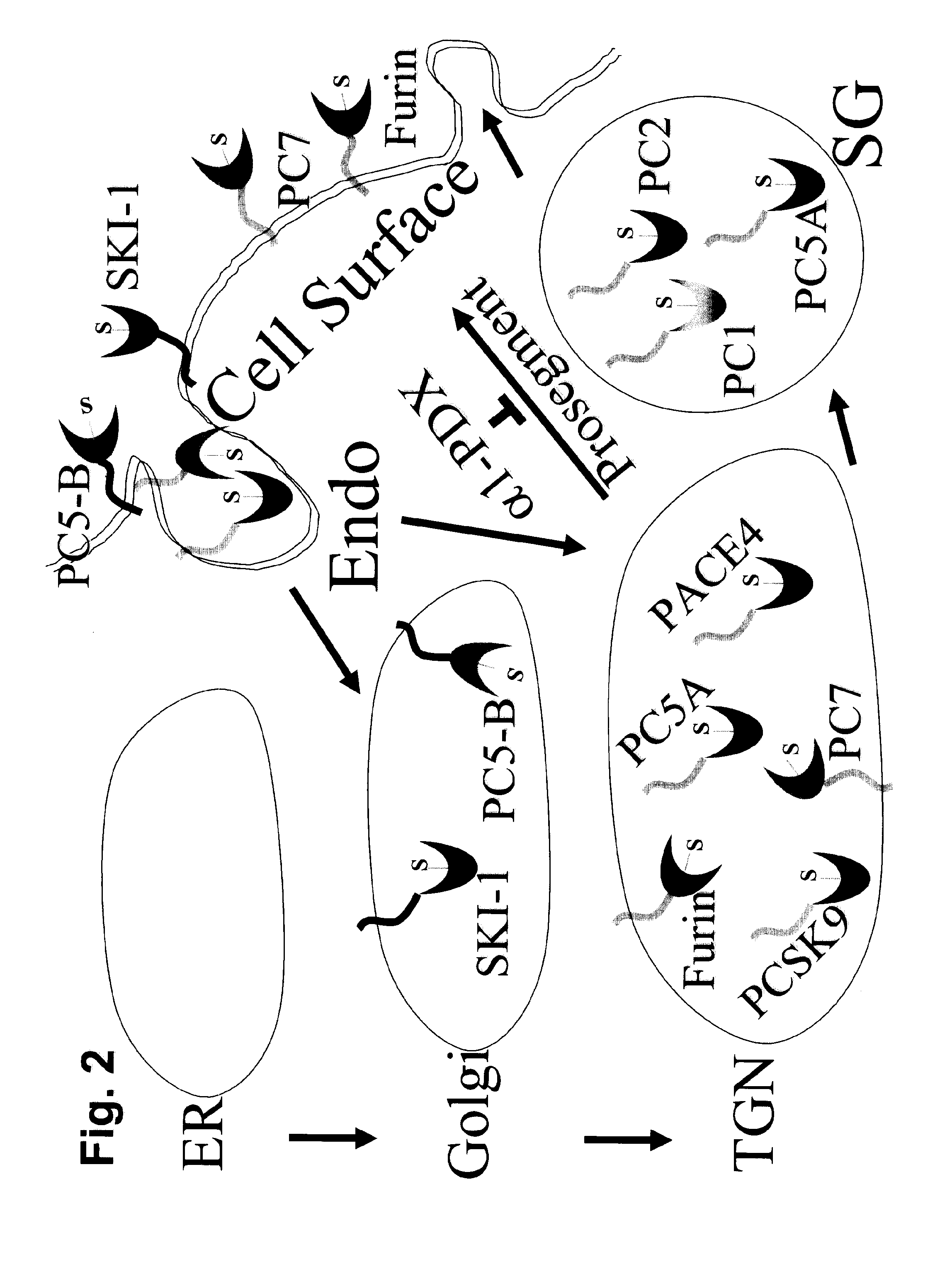Chimeric pcsk9 proteins, cells comprising same, and assays using same
a technology of pcsk9 and assays, applied in the field of chimeric proteins, cells comprising same, and assays using same, can solve the problems of inability to identify new unsuspected functions of this enzyme, unclear molecular mechanisms that underlie the dominance of dyslipidemia trait caused by pcsk9 missense mutations, and inability to use pcsk9 in in vitro assays to identify pcsk9 inhibitors
- Summary
- Abstract
- Description
- Claims
- Application Information
AI Technical Summary
Benefits of technology
Problems solved by technology
Method used
Image
Examples
example 1
Identification of PCSK9 with Enhanced Cellular Activities Construction of the Chimera
[0140]The constructions of the three presented PCSK9 chimera (FIG. 3) were obtained by standard PCR and cloning techniques (Wiley, J. & Sons) and were made in the model vector phCMV3 (Invitrogen). The cDNA and amino acid sequences appear in FIGS. 16-18. The chimera presented contain the TM-CT domains of the human low density lipoprotein receptor (LDLR), human lysosomal-associated membrane protein 1 (Lamp1) or human angiotensin converting enzyme-2 (ACE2).
Degradation of LDLR Cell Surface in the Presence of the Chimera
[0141]HEK293 cells were transiently transfected with different PCSK9-chimera constructions (Benjannet et al., 2004). FIG. 4 shows the Western blot analysis of the level of LDLR (as detected by a commercially available C7-mAb) in HEK293 cells transiently co-transfected with full length LDLR and, as indicated at the top of each lanes, with either wild type (WT) PCSK9, a PCSK9-TM-CT chimera ...
example 2
Enhanced Cellular PCSK9 Activities and the Identification of Novel Cell Surface Detector Molecules
[0157]Cells which express a PCSK9 with increased cellular activities, as measured by a very low to undetectable level of LDLR at the cell surface, could be used to identify novel cell surface molecules that, similarly to LDLR, are also sensitive to the presence of the PCSK9.
[0158]While LRP was found not to be affected by PCSK9 (Benjannet et al., 2004), the present invention shows that VLDLR and ApoER2 (FIGS. 11 and 12), are degraded by PCSK9 (FIGS. 13 and 14). [PCSK9-TM-CT (Lamp1)] (SEQ ID NO: 24) was selected as the chimera that results in the highest efficacy of degradation of either LDLR, VLDLR or ApoER2.
[0159]A stable transfectant pool of [PCSK9-TM-CT (Lamp1)] was obtained in HuH7 cells that were resistant to G418. These cells were then FACS-selected for clones with the lowest levels of endogenous cell-surface LDLR. These cells form the basis for the proteomics and genomics analysis...
example 3
Cell-Based Assay for the Inhibition of PCSK9
[0160]Stable clones expressing [PCSK9-TM-CT (Lamp1)] (SEQ ID NO: 24) formed the basis for a cell-based assay for the HTS analysis for the discovery of PCSK9-inhibitory / silencing compounds.
[0161]The sequence of PCSK9 in the chimera could contain the human full-length (SEQ ID NO: 21) or any sequence satisfying the consensus derived from the human, mice, rat and monkey PCSK9 or alternatively variants of PCSK9 identified as conferring to PCSK9 resistance to cleavage by other enzymes, e.g., the R218S mutation (FIG. 8), thereby resulting in an increased PCSK9 activity due to its lower degradation.
[0162]LDLR read out may be used in HuH7 cells or any cell type of interest. The protein level of the LDLR at the cell surface is extremely low as verified by FACS analysis. Upon HTS screening, the increased level of LDLR at the cell surface was measured using either a fluorescent or HRP-tagged antibody to LDLR, or using a fluorescent ligand such as Dil-...
PUM
| Property | Measurement | Unit |
|---|---|---|
| Concentration | aaaaa | aaaaa |
| Density | aaaaa | aaaaa |
Abstract
Description
Claims
Application Information
 Login to View More
Login to View More - R&D
- Intellectual Property
- Life Sciences
- Materials
- Tech Scout
- Unparalleled Data Quality
- Higher Quality Content
- 60% Fewer Hallucinations
Browse by: Latest US Patents, China's latest patents, Technical Efficacy Thesaurus, Application Domain, Technology Topic, Popular Technical Reports.
© 2025 PatSnap. All rights reserved.Legal|Privacy policy|Modern Slavery Act Transparency Statement|Sitemap|About US| Contact US: help@patsnap.com



